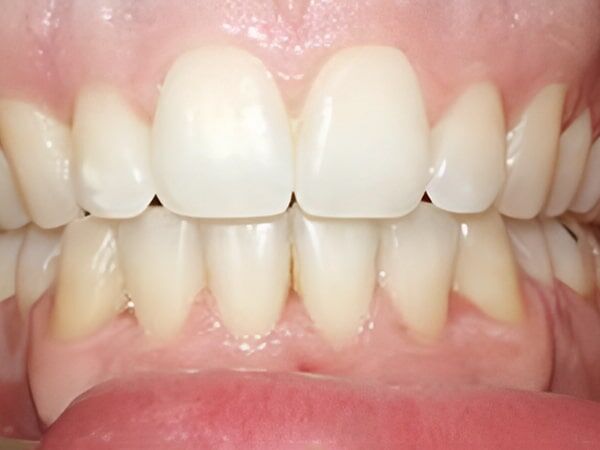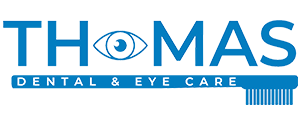General Dentistry
Tooth Extractions
Transform Your Smile
Tooth Extractions
Dr. Thomas makes every effort to save natural teeth, but if a tooth is too badly damaged by decay or trauma to be saved with fillings, a root canal, or a crown, it must be pulled in order to maintain your oral health. When a tooth is pulled it is called an extraction.
It is also usually recommended to have wisdom teeth pulled since they can cause many problems as they erupt or become impacted in the jawbone. Wisdom teeth can cause infections when they are partially erupted because food and bacteria get trapped under the irregular gum line of the partially exposed wisdom tooth. They can also be out of alignment and create crowding among other teeth, or even cause erosion cavities by rubbing against the molars in front of them.
Whether you are having wisdom teeth extracted or are having another tooth pulled, Dr. Thomas goes to great lengths to make you comfortable before, during and after a tooth extraction. From the relaxing atmosphere of our Owasso office to our caring staff and expert use of pain relieving technologies, we’ll make sure that your tooth extraction goes smoothly and you stay comfortable.

Tooth Extractions
Procedure
Our friendly staff will put you at ease from the moment you arrive. When it is time to start the procedure, you’ll be made comfortable in our state-of-the-art dental chairs and we’ll give you the opportunity to use our ceiling-mounted video entertainment system complete with headphones to keep you entertained while we work.
Before your tooth removal procedure, we’ll thoroughly review your medical and dental history and take x-rays. The x-rays will help Dr. Thomas analyze the length, shape and position of the tooth and its surrounding bone.
Dr. Thomas will numb the area surrounding the tooth using a local anesthetic so that you don’t feel any pain during the procedure. The tooth to be extracted will be loosened using a tool called an elevator. Then Dr. Thomas will use dental forceps to remove it.
FAQ
Tips for a quick recovery
Numbness
While your mouth is still numb, be careful not to bite your lip, cheek or tongue. It’s best not to eat anything that needs to be chewed until the numbness wears off which should happen within a few hours.
Pain Medication
When the numbness begins to wear off, it is a good idea to immediately take ibuprofen or the pain medication that you and Dr. Thomas discussed so that it will kick in before the numbness is completely gone.
Ice
Use ice packs on the side of your face over the extraction site to help limit swelling and discomfort. If you don’t have frozen gel packs, you can improvise by crushing ice and using watertight baggies or bags of frozen peas to easily conform to the shape of your jaw line. Alternate 20 minutes on and 20 minutes off with your ice packs.
Gauze
If your extraction site is packed with gauze to limit bleeding, it should be left in place for 30-45 minutes after you leave the dentist’s office to help a blood clot form. If light bleeding continues, dampen a clean piece of gauze, fold it up and place it over the extraction site, holding it in place with light bite pressure. If it becomes soaked with blood, replace it with a clean one. If heavy bleeding continues for more than a few hours, call Dr. Thomas for instructions.
Tea Bag
If you are having difficulty stopping the bleeding with gauze, try using a moistened black tea bag and then cooling it and using it in place of the gauze. The natural tannins in the black tea will help with clotting factors and also help shrink tissues to staunch bleeding.
No Smoking
While becoming a non-smoker is always a good idea for your oral health, it is important that you do not smoke for at least 24 hours after a tooth extraction.
Avoiding Dry Socket
When the blood clot that forms at the site of a tooth extraction is dislodged, it is called a dry socket and it can be very painful. It also removes the protection to the socket that the clot provided and makes healing time longer. So it is important to take steps to avoid dislodging the blood clot.
- Do not drink through a straw for at least 24 hours after your tooth is extracted.
- Do not rinse your mouth vigorously for 24 hours.
- Avoid alcoholic beverages and mouthwash containing alcohol for 24 hours.
- Limit strenuous activity for 24 hours.
- Do not suck or spit for 24 hours.
- Do not disturb the extraction site with your tongue.
- Do not clean the teeth next to the extraction site for 24 hours.
- Avoid hot beverages for 24 hours.
Cleaning Your Mouth
You can brush and floss your other teeth the day of the procedure. You can also brush your tongue to help cut down on odor causing bacteria and unpleasant tastes. After 24 hours have passed, you can also begin rinsing your mouth with warm salt water to keep it clean and speed healing. Stir a half teaspoon of salt into an 8 oz. glass of warm water and gently swish around your mouth. Remember, do not rinse vigorously for the first few days as this can dislodge the clot.
Soft Foods
It’s best to eat soft, nutritious foods for the first day after your extraction. Once you start eating solid food again, it is best to chew on the side opposite of your extraction site for a few days.
When to Call the Dentist
If you have any of the following issues after your tooth extraction, call Dr. Thomas for further instructions.
- Fever, nausea or vomiting
- Ongoing or severe pain, swelling or bleeding after the first few hours
- Pain that gets worse instead of better
Satisfaction Guarantee
Our patients are our top priority. We offer quality dental and eye care services with a team of seasoned specialists.
Awesome Technology
We use top of the line advanced technology for all your dental and eye care needs.
Professional Dentist
As your dentist, Dr. Dirk Thomas will help your whole family maintain healthy smiles and good oral health.

